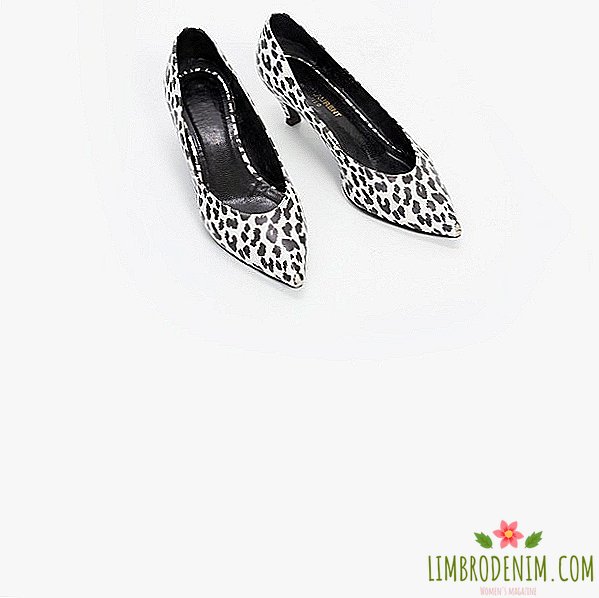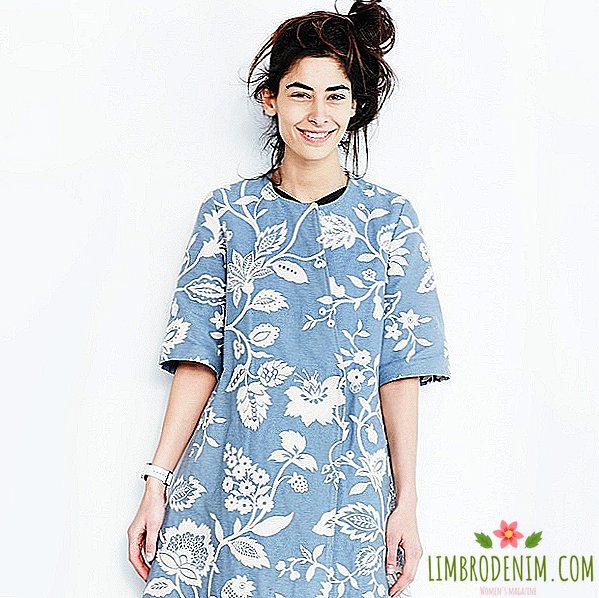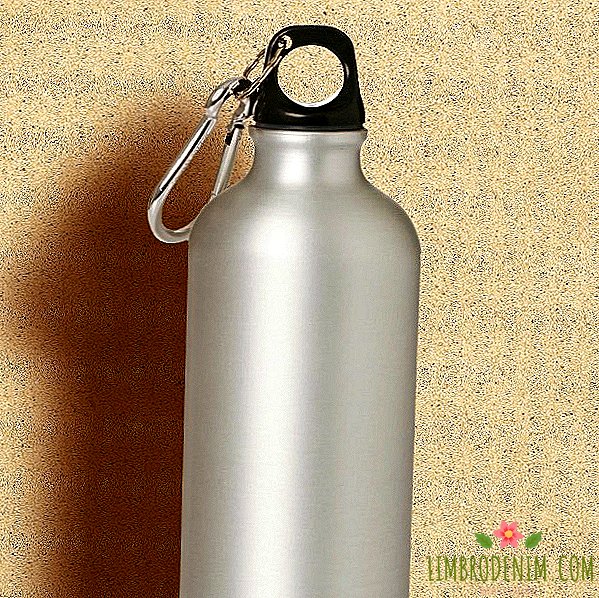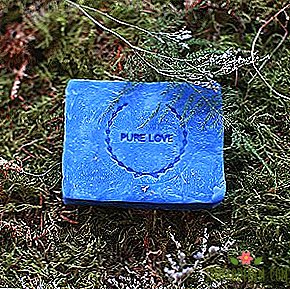On the second cut: Why do designers work with vintage fabrics
"Designers take vintage tablecloths, draperies, bed linen and give them a new life, creating a unique fashion. An old linen scarf becomes the collar of a blouse, a cotton tablecloth with a festive fruit print is a men's shirt, and a fragment of a textile boot is a vest ", - this is how The Times describes in 1993 the passion of designers who decided to work not with new textiles, but with old things and antique materials.
Vivienne Westwood and Martin Margela were experimenting with textile processing at different times - they considered this to be a riot against the existing system of production and consumption. The vintage and second-hand boom happens when fashion redefines its own values. This was already the case in the 2000s: glossy magazines wrote about fashionable girls who do not hesitate to wear second-hand clothes and combine them with expensive brands, and designers like Tara Sabkoff, who produced touching and artistic under the Imitation of Christ label, became particularly popular. collections, stitched from old clothes. But is there a future for such brands now?
The reasons why designer brands work with vintage textiles today are becoming deeper and more multifaceted. The development of the Internet, social networks and the availability of fast individual sales have led to the emergence of a huge number of local brands that produce things in small quantities and do not seek to increase turnover. And where and how can such a brand take textiles for its collection?
The most obvious is to contact directly or through an intermediary with a factory producing fabrics and knitwear. But not all textile suppliers are ready to work with tiny volumes. And if the factory agreed to sell the designer 15-20 meters of fabric, it means that another designer will buy the same amount from it - and a thing from this fabric will appear on the next picture on instagram. You can design textiles yourself: printing your own prints is available even if you order small metric areas. But the capabilities of small companies are usually limited - for example, the Moscow textile design studio "Salt" makes printing on synthetic bases, because cotton ones require other equipment. Well, the cost of textiles with their own design is much higher, especially when it comes to the production of complex materials such as jacquard or tapestry.
Another available way is to buy on the stocks, that is, on sale, the remnants of textiles produced by large designer brands for their own collections. In the Italian town of Prato, there are entire warehouses where textiles left after seasonal purchases are brought, and where it can be purchased at gentle prices. Often, it is bought by wholesalers - so the materials that belonged to eminent labels go to regular stores. Belgian designers like Dries van Noten or Raf Simons arrange sales of textile residues at the same time as sample sales. Designers work with stock fabrics, producing small quantities of products and aiming at ecological production - since the processing of residues is obviously more humane than the production of new textiles.
True, the use of copyright textiles poses a dilemma for the owners of local brands: can the design of things be considered completely original if another artist worked on the fabric pattern and did not do it as part of a joint project? The correct answer is not here, but a graduate of the Antwerp Academy of Fine Arts Sanan Hasanov, for example, used in one of his educational collections fragments of recognizable printed fabric Raf Simons x Mr. Porter 2013, integrating it into your own design so subtly and ironically, that earned an award in the internal competition of the Academy.
But in the trend of ethical production work with vintage materials fits in the best way. Olya Glagoleva, the creator of the Go Authentic brand who develops collections with third-party artists, says: "Certified eco-fabrics are not sold in Russia today, but this is a matter of time. The more local your production, the less carbon footprint your product produces, so for now the most competent option is to use vintage and vintage fabrics. " The designer is sure that the rewiring is the most eco-friendly version of clothing production in Russia.. GA recently released a collection with RGUTIS students - second-hand shirts, decorated with embroidery and lined with vintage cotton. “Each item is made in a single copy, but orders are being received for repetition,” says Olya.
In search of vintage fabrics, you can go to flea markets - in Europe, many home textiles are put up for sale: embroidered tablecloths, napkins - and at very low prices. In Russia, on “flaps” like “Udelnaya” one can search for stocks of Soviet printed fabrics. All the same is sold through the Internet - for example, at Etsy and the “Fair of Masters”.
It should be borne in mind that the fabrics developed in the middle of the last century are narrow — less than a meter wide, and the quality of printed patterns may not be ideal. But the latter is often touted as a virtue: small defects make the fabric unique and “alive”. Another obvious advantage is that making clothes with needlework items is long and expensive, and the use of ready-made vintage embroidery and handmade lace speeds up the process considerably.
Working with vintage textiles, it is impossible to act according to the traditional pattern: first come up with models of products, and then look for fabrics for their realization. In this case, the fabrics themselves dictate the idea, and sometimes suggest the concept of the entire collection. The young designer Nikita Kalmykov made an almost intimate collection of men's things, based on curtains and sheets, embroidered by his great-grandmother's hands. The collaboration of Liza Smirnova and the above-mentioned eco-brand GA “Artist of the House” is based on the interaction of bright, memorable embroideries of Smirnova and textiles — blankets and waffle towels — originally from the vintage disintegration of England.
Ukrainian designer Ksenia Schneider takes her ideas from the assets of Maison Margiela: in its history, the brand has often processed denim, turning it not only into new jeans, but also into the very “denim fur” that Schneider is actively working with. RE / DONE is a company that promotes the idea of sustainable fashion and produces jeans collections from Levi's recycled models: old jeans are ripped up, washed and assembled on new patterns, sometimes decorating. Winner of the LVMH contest Marin Serre admits that her dresses were made from vintage scarves, and shirts and wetsuits were made with the participation of already used clothes. Designer Emily Bode uses pre-made quilts that she buys at fairs and flea markets. In addition, she collects tiny pieces of paper (even rare antique samples of the last century can be among them) for the reconstruction of purchased blankets or the creation of individual items of clothing. Of these colorful cloths they sew shirts and jackets - formally "for men", but of course they are wearing them.
A Hong Kong-based designer, Vinci Ching, working under the Heritage ReFashioned label, takes vintage Japanese and Chinese fabrics and turns them into clutches and small purses with clasps. As she says, the love of textiles came to her as a child - when she played at her parents' garment factory. "I choose very richly decorated fabrics filled with metallic gold threads. They are very often made using real gold.", - Ching says. A Los Angeles-branded Purrr brand produces cute girlish dresses and sets, inspired by Japanese street style and recycling vintage clothing and stock fabrics.
It is safe to predict that the popularity of such an approach to design will only grow - given the interest in responsible consumption, the ecological situation in general and the need for original, thoughtfully made things. And the fact that things processed from vintage ones cannot be produced in large quantities is, by modern standards, their dignity rather than disadvantage.
Photo: Sanan Gasanov, BODE New York







